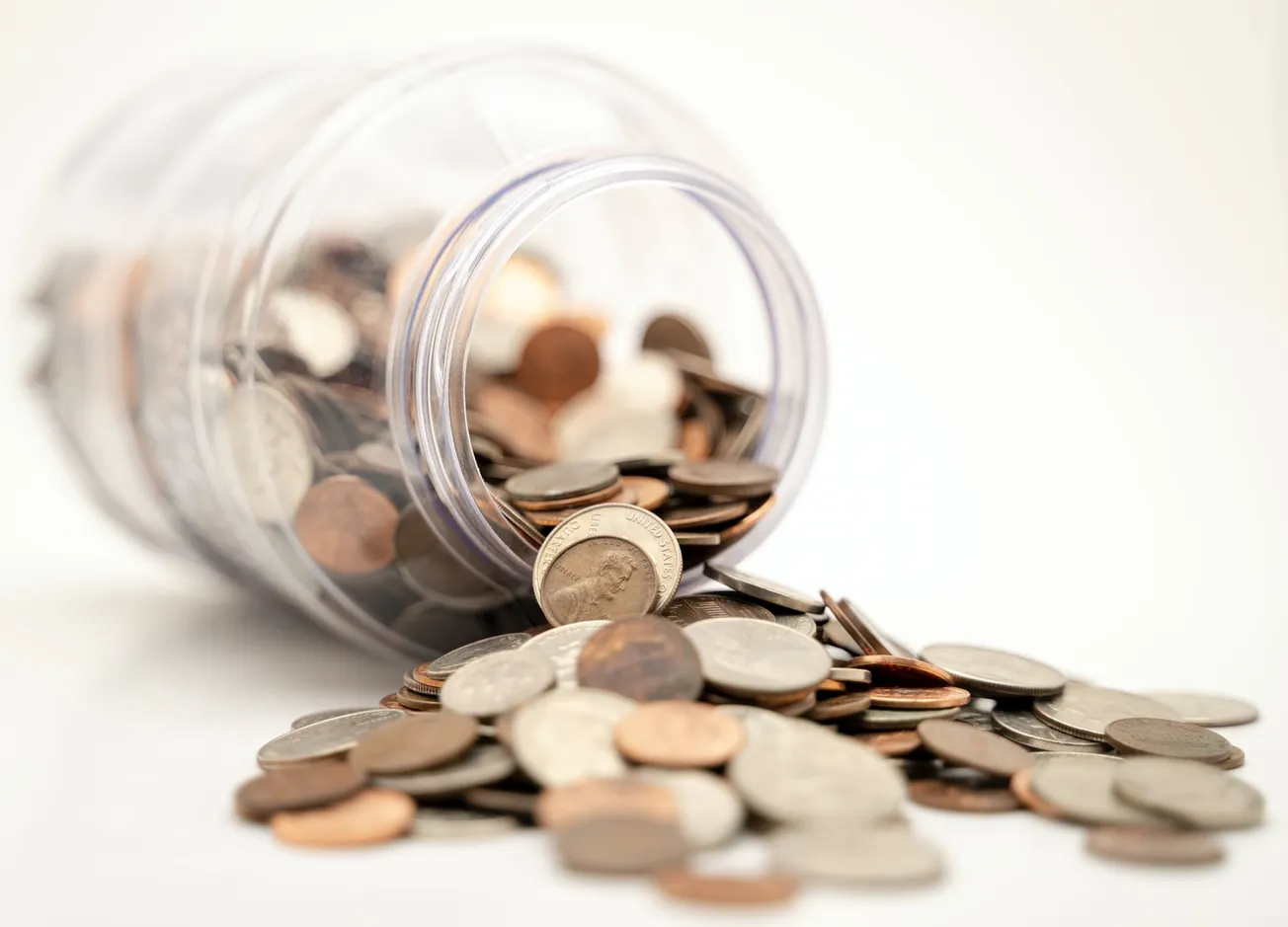George Ford Smith
George Ford Smith is a former mainframe and PC programmer and technology instructor, the author of eight books including a novel about a renegade Fed chairman (Flight of the Barbarous Relic) and a nonfiction book on how money became an instrument of theft (The Jolly Roger Dollar).
In 1903, a lawyer in Germany took out an insurance policy and made payments on it faithfully. When the policy came due in 20 years, he cashed it in and bought a single loaf of bread with the proceeds. He was fortunate. If he had waited a few days longer, the money he received would have bought no more than a few crumbs.
Germany had been on the usual fractional reserve gold standard prior to World War I, with the Reichsbank – its central bank – expanding the money supply at a ‘mild’ one to two per cent inflation rate. When war broke out in 1914, the government followed the standard policy of deficit spending rather than attempting to raise taxes. The Reichsbank’s role was to monetize the government debt – that is, pay for new treasury obligations by printing more money.
At the war’s end, the number of German marks in circulation had quadrupled, and prices had gone up 140 per cent. However, the mark was no worse off than the currencies of other belligerents. It was weaker than the American dollar but stronger than the French franc and about the same as the British pound.
Yet, five years later, by December 1923, Germans were paying trillions of marks for ordinary goods, an almost inconceivable situation in a country with a long tradition of education and scholarship – where Americans had once gone to study for advanced degrees. What happened?
In addition to carrying the economic burdens of the armistice – Winston Churchill’s starvation blockade of import-dependent Germany continued after the cease-fire of November 1918 – the socialist German government had pushed ahead with the state funding of health, education, and welfare. It also had to deal with astronomical deficits from its nationalized industries and demobilization expenses from the war. From 1914 to 1923, its tax revenues paid for only 15.0 per cent of its expenses; by October 1923, tax receipts covered only 0.8 per cent of government expenditures.
The government’s choices throughout were either to cut spending, borrow from the public, raise taxes, or print more money. It pursued the last policy, while at the same time vehemently denying it was inflating the money supply. To the government and its supporters, its paper inflation was a consequence, not a cause; the real culprits in Germany’s monetary meltdown were the impossible reparation payments and other burdens imposed by the Treaty of Versailles. Eventually, currency speculators shared the blame, but the official press never placed responsibility for the inflation on the institution actually printing the money.
In a fitting twist of justice, the government’s inflationary policies – in destroying taxable wealth – reduced its revenue.
With the mark collapsing, mortgages, bonds, annuities, pensions, and the like were virtually worthless, and tax authorities had almost nothing to tax. Savers, especially rich ones, had moved their savings to foreign bank accounts and foreign currencies in a massive ‘flight of capital’ to escape the plunder. With inflation increasing hourly, overall tax revenue fell simply due to the time lapse between taxable transactions and tax payments. Meanwhile, government expenditures accelerated, pushing deficits higher. The government printed ever-greater quantities of money to meet its liabilities, which created even higher deficits. Like a man caught in quicksand, each frantic struggle only moved the government closer to the end.
As the hyperinflation accelerated, people spent money as fast as they got it on the most durable goods they could afford. The ‘flight of capital’ was augmented and replaced by the ‘flight from currency.’ Factory workers were paid twice daily in large bundles of cash, which their spouses or relatives took and rushed off to spend. People began by buying diamonds, gold, pianos, antique furniture, and land, then later buying just about anything to get rid of the currency. They gradually switched from money transactions to barter. Desperate people began to steal what they couldn’t obtain in trade. Gasoline was siphoned from cars. Prostitutes of both sexes walked the streets of Berlin.
However, some of the young people found the atmosphere exhilarating. Their parents had taught them to work hard and save, but clearly this was a time to spend and pay close attention to politics.
The Yugoslavia Meltdown
The hyperinflation of Germany was one of many runaway inflations of the last century. Hungary, China, Bolivia, Argentina, Peru, Brazil, Russia, Austria, Poland, Greece, and the Ukraine, among others, all experienced hyperinflations in varying degrees. However, the worst case of monetary destruction happened in Yugoslavia from 1993-94.
The Communist Party running the country had been financing government projects with printing-press money, a tradition it had inherited from the regime under Josip Broz Tito but which it carried on to a far greater degree. The government ran a network of stores that were supposed to sell goods below market prices, but the stores rarely had anything to sell. The government’s gasoline stations eventually closed, leaving people dealing with roadside vendors who sold gas at eight dollars a gallon from plastic cans sitting on the hoods of their cars. Car owners turned to public transportation, but the Belgrade transit authority only had the funds to run 500 of its 1200 buses. The buses were so overcrowded, the ticket collectors couldn’t get aboard to collect fares.
The entire infrastructure was in shambles. Streets were full of potholes, elevators stopped working, and construction projects shut down. Unemployment rose to over 30 per cent. The government tried to halt rising prices with price controls, but food producers refused to sell their products to the government at artificially low prices.
The government modified its edict by requiring merchants to file paperwork every time they wanted to raise prices. However, inflation got worse. Merchants increased their prices in larger increments so they wouldn’t have to file forms again so soon. In October 1993 – in an effort to halt soaring prices – the government issued a new currency unit, the dinar, worth one million of the old dinars. By early 1995, prices had increased by 5,000,000,000,000,000 (5 quadrillion) per cent.
As in other super-inflated economies, people adopted new methods of survival. Thieves robbed hospitals and clinics of needed medicines, then sold them in front of the places they robbed. People postponed paying their bills as long as possible so they could pay them in near-worthless currency. Postmen were responsible for collecting telephone bills, but one postman found it cheaper to pay the bills of 780 customers himself rather than try to collect payment.
Fractional Reserve Banking
Hidden in all this gruesome detail is a quiet concept mentioned at the beginning, fractional reserve banking – the practice of creating money out of thin air by expanding credit beyond what a bank has in cash holdings.
Fractional reserve banking has its roots in the West in mid-17th-century England, where merchants began storing their gold with private goldsmiths, who would give them receipts in exchange. The receipts began to function as money substitutes, being used in daily transactions as if they were gold. People accepted the receipts because they had unfailing trust that the goldsmiths could redeem these receipts on demand for the gold they represented.
Because of the convenience that paper offered, people got into the habit of not redeeming the receipts. The goldsmiths noticed this. They always had gold on deposit that no one was claiming. Eventually, they decided to lend out fake receipts for which no gold had been deposited. As long as the goldsmiths didn’t get too greedy and issue too many counterfeit receipts, they could usually meet the occasional demands for redemption.
The fake receipts circulated side by side with legitimate deposit receipts and gold coins. Not only was the issue of counterfeit receipts fraudulent, it also inflated the money supply.
Yet, there were almost no laws to incriminate the goldsmiths – and the deposit banks that followed – for the practice of printing fake deposit receipts. The first test cases didn’t come until the early 19th century in England, which ruled in favor of the banks. Though one of the counsel argued that “a banker is rather a bailee of his customer’s funds than his debtor,” the presiding judge (“Master of the Rolls”), Sir William Grant, ruled that the argument wasn’t true. Money deposited with a banker becomes “immediately a part of his general assets; and he is merely a debtor for the amount.”
In 1848, in Foley v Hill and Others, the English judge Lord Cottenham went further, saying that “the money placed in the custody of a banker is, to all intents and purposes, the money of the banker, to do with it as he pleases … he is not bound to keep it or deal with it as the property of his principal.” Thus, if banks are unable to meet their obligation to redeem on demand, they become merely a “legitimate insolvent instead of an embezzler,” as Murray Rothbard observed.
American banking law has followed Foley faithfully in most key respects. Rothbard concludes: “To Foley and the previous decisions must be ascribed the major share of the blame for our fraudulent system of fractional reserve banking and for the disastrous inflations of the past two centuries.”
According to Ludwig von Mises, imposed deflation can never repair the damage of prior inflation, as Federal Reserve chairman Jay Powell and his associates are trying to do today. For Mises, it was like running over a person with a car, then trying to undo the damage by backing over him. Deflationary manipulation of money is just as destructive as inflationary manipulation.









